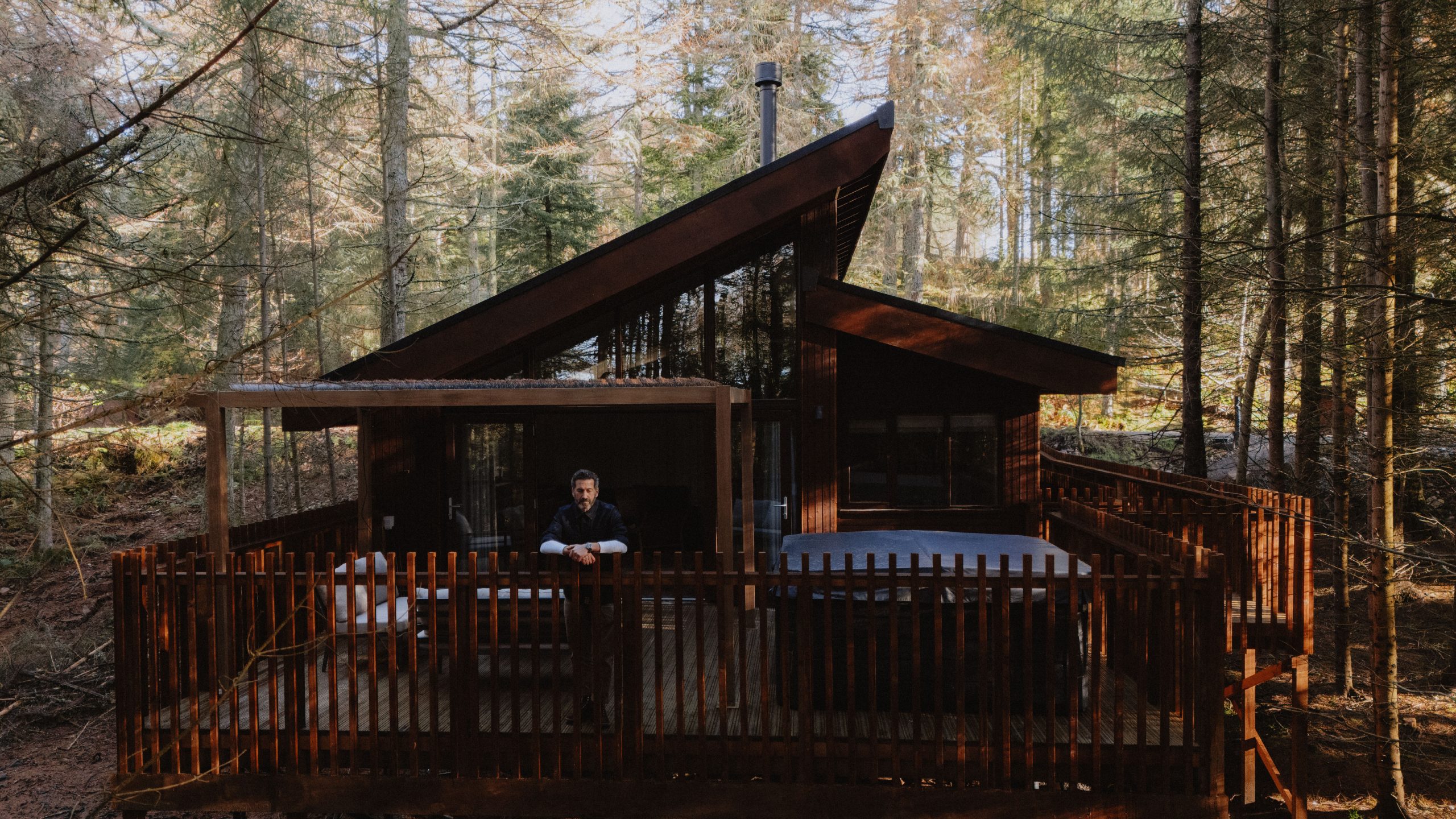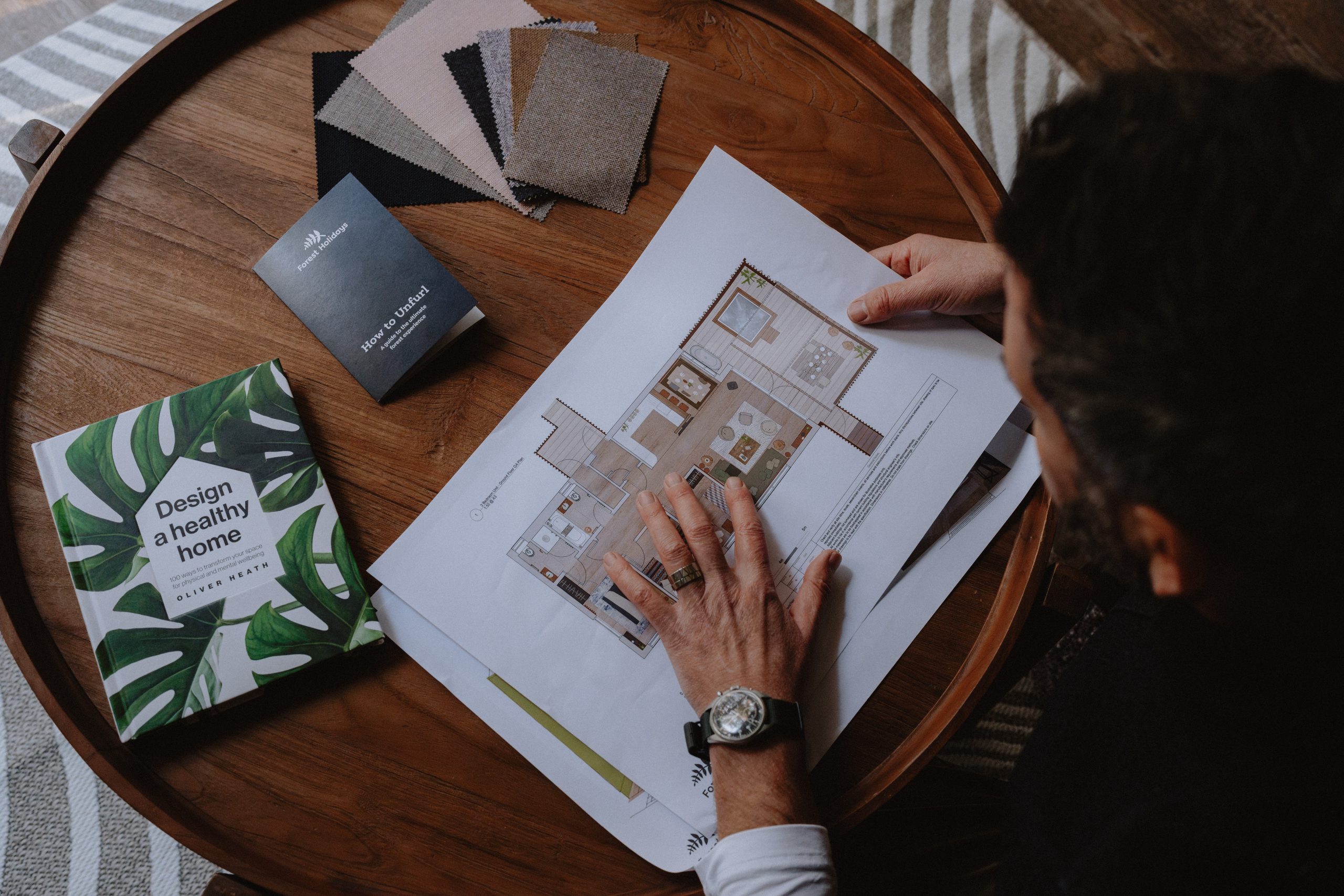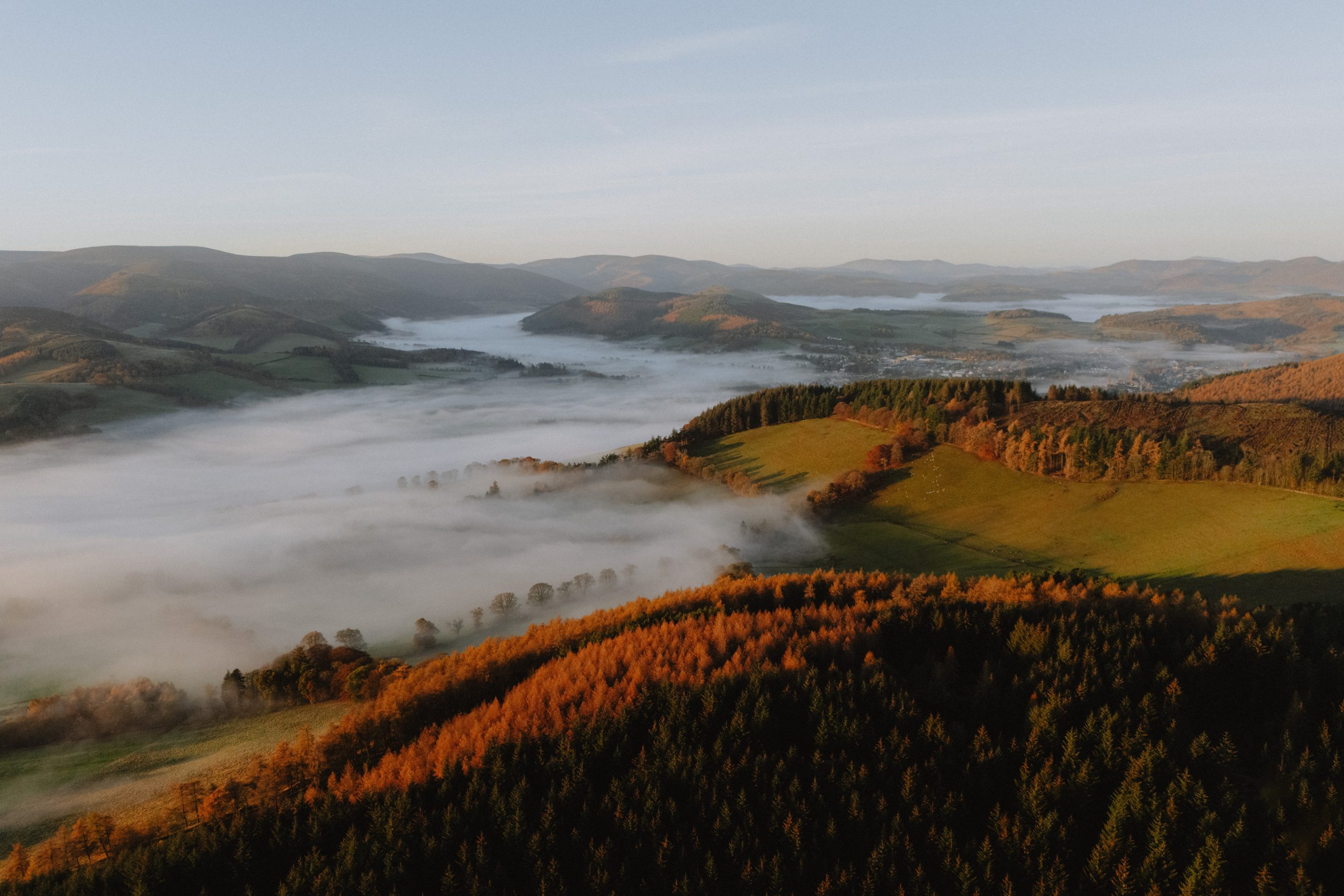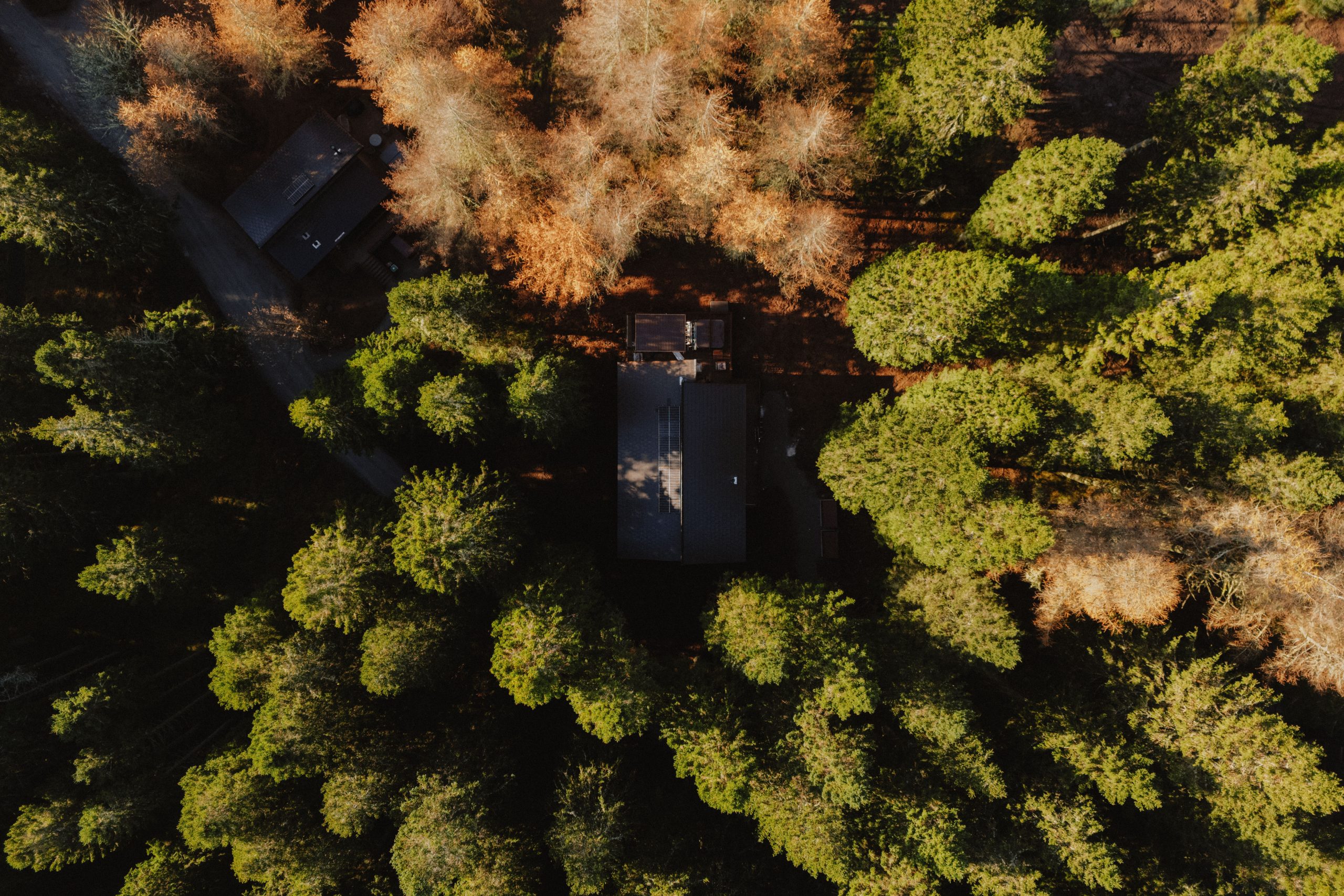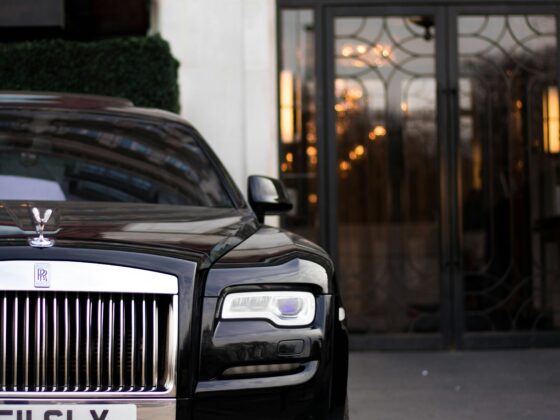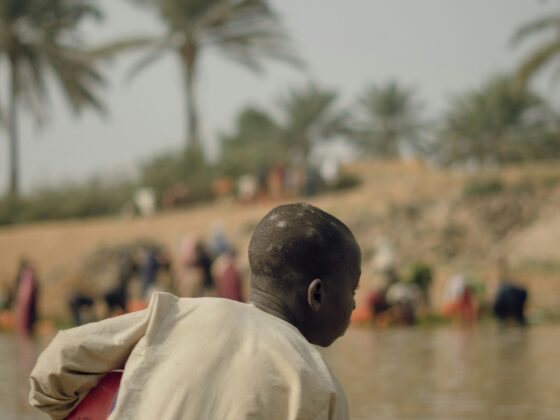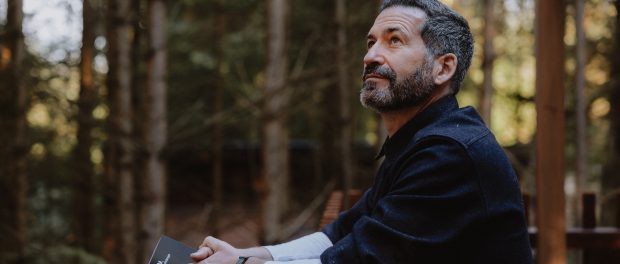
Oliver Heath is a pioneer in biophilic design, merging nature with human-centered interiors to promote well-being and sustainability. In this interview, we talk to Oliver about his collaboration with Forest Holidays at their new Glentress Forest location.
He shares how the Unfurl Collection uses natural materials, textures, and layouts to create immersive, restorative guest experiences. Oliver also discusses biophilic design’s role in the future of hospitality, aligning with wellness trends, and enhancing connections to nature while reflecting a brand’s ecological identity.
How has your collaboration with Forest Holidays brought Biophilic design principles to life in a way that enhances the guest experience?
In Biophilic design we approach design quite differently from most. Instead of using design as an extrinsic message about identity or status, we use it intrinsically – focusing on how design makes people feel. Our collaboration with Forest Holidays at their brand new Glentress Forest location rests on a human-centred approach to design that uses connection to nature to reduce stress, aid recuperation, and connect people with spaces and each other.
The latter being especially important for our collaboration with Forest Holidays because when people go away with larger groups it’s all about that communal experience. We implemented this through three key biophilic design platforms.
First, direct connection to nature – in the Forest Holidays Unfurl cabins at Glentress Forest, we’ve created covered deck spaces with carefully placed furniture and lighting to encourage immersive nature experiences.
Second, we mimicked nature through colours, materials, textures, and lighting within the Unfurl Collection.
The third platform is about the experience of space and place. We used ‘prospect and retreat’ principles, like in the hide – a space in the 4-bed cabin, where guests can sit on a simple bench and look out over a carefully framed view. It allows people a moment to stop, sit, and observe the gentle movements and changes in nature.
What role do you see Biophilic design playing in shaping the future of hospitality spaces, particularly in connecting guests with nature?
I see biophilic design creating an essential point of difference in hospitality. As we experienced at Glentress Forest, each location can reflect its local environment, creating a distinctive identity. We also see biophilic design shaping the future of hospitality spaces in the way that it connects with the trend for wellness tourism, which is currently valued at $651 billion, according to the Global Wellness Institute.
However, it’s not just about money – it’s about creating spaces that help people recuperate from everyday stresses and connect more deeply with their location. The future of hospitality isn’t just about providing a place to stay, it’s about designing spaces that subtly support guest well-being and create meaningful connections to the natural environment, and this is exactly what we were able to do in our collaboration with Forest Holidays.
How does this project with Forest Holidays align with their brand ethos, and what makes it unique in the hospitality market?
Firstly, I just wanted to talk about my delight at the opportunity to work with a brand like Forest Holidays who is so closely connected to the well-being of nature and wanting to enhance that experience for their guests so that both nature and people benefit. We were really encouraged by the understanding that Forest Holidays are B-Corp accredited and deeply connected to the forest through land management.
Our goal was to design the Unfurl Collection to align with their ethos and their B-Corp accreditation by creating spaces that restore and refresh guests’ physical and mental well-being. What makes this project unique is how we’ve sought to reflect the local ecology of Glentress Forest, creating a design that captures the visual richness and complexity of the natural environment while providing a meaningful guest experience.
The campaign imagery is striking. Could you share the inspiration behind these visuals and how they reflect the project’s core themes?
We wanted to express the visual complexity of the forest setting within the cabins at Glentress Forest. For the interiors we aimed for a mid-level visual complexity – reflecting the surrounding forest without completely mimicking it. For instance, the vertical lines of the timber wall panelling directly mirror the verticality of the fir trees in the forest.
During my initial site visit, I collected stones, moss branches, and pinecones to inform our design approach. From these we incorporated the landscape’s colours– into our design palette to closely reflect the surroundings of Forest Holidays’ new Glentress Forest location. We also created subtly different zones in the living spaces using colours, materials, and textures to provide a diverse experience.
The results of this approach were clear when I stood on the deck of the Unfurl cabin during the photoshoot, I was struck by the calm, gentle transition between the cabin’s interior and the surrounding forest – a connection we deliberately designed to create a harmonious experience.
What are some of the challenges you face when introducing Biophilic design into luxury hospitality projects, and how do you overcome them?
We face several key challenges:
- One of which is maintenance of natural elements, particularly plants. We would ideally want nature to be relatively mature and well grown straight from the off. However, we have to realize that actually, when we install natural features, they will take time to settle in, embed, and react to the local, environmental conditions.
- Time frames are a challenge as they often aren’t as long as we need them to be when working with natural elements – it can take a little longer if you want to add specific features.
- Urban environments pose unique challenges, especially in smaller spaces not originally designed for human well-being. When working with Forest Holidays however, the external environment of Glentress Forest is filled with native trees and so it didn’t feel it was necessary to introduce plants and greenery inside as there was so much nature already surrounding the cabins.
For luxury hotels or retreats looking to incorporate Biophilic design, what practical advice would you give to create immersive and memorable guest experiences?
First, they need to recognize that biophilic design is evidence-based, rooted in 30 years of environmental psychology research and so it is important to invest in understanding how people experience the space – through guest and staff feedback.
I would recommend creating mindful experiences by designing for multiple senses, helping guests be present in the moment. Incorporate spaces that offer ‘prospect and retreat’, providing both a sense of safety and opportunity for relaxation.
I would suggest maximizing views, whether of natural or urban landscapes. Lastly, consider how these spaces can not only boost individual well-being but also foster a sense of community.
Ultimately, nature connections can become essential part of a location’s identity and marketing.
In the case of Forest Holidays at Glentress Forest, we had a unique ecological identity to work with – creating an interior space that gently connects to the exterior environment, keeping guests present, relaxed, and connected to their surroundings.

